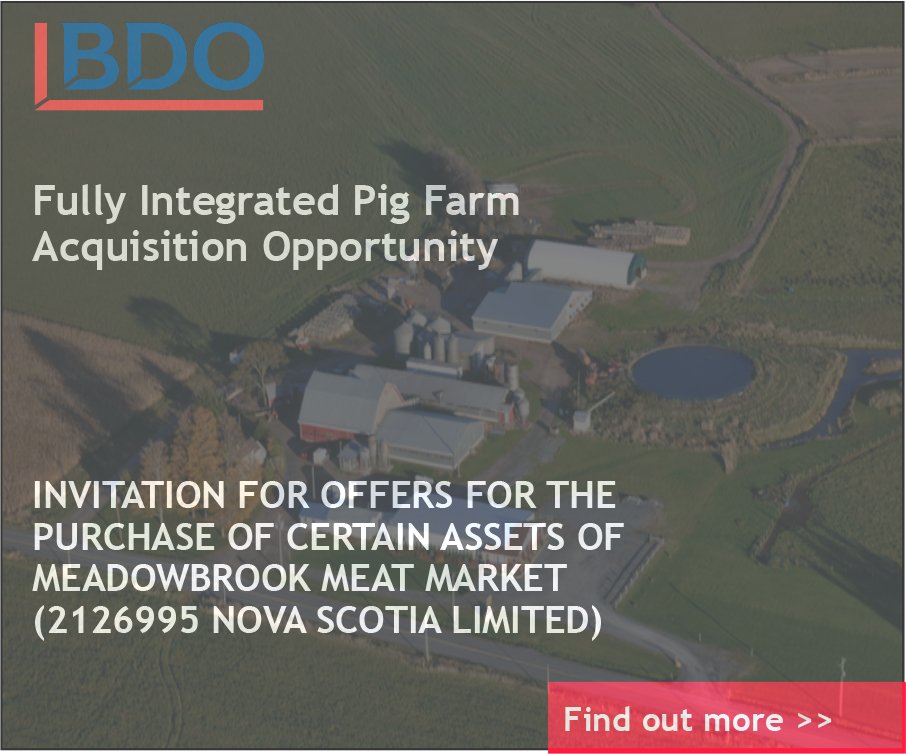Industry confidence seen in rising farmland values
/by Owen Roberts
Seasoned farm realtor Tim Hammond knows producers are experiencing some sticker shock over the rising cost of farmland. And earlier this year he expected at least a few raised eyebrows from prospective buyers over the $22.4-million price tag on a 5,700-acre grain operation near Rosetown, Sask., that his company represented.
But to his surprise, he received none. In fact, the reaction was opposite.
“The number of calls we received for that farm far outnumbered the ones we received for other smaller listings during that period,” said Hammond. “A lot of buyers from this province and others are looking to buy.”
Indeed, Hammond said his website analytics showed nearly 810,000 hits from more than 27,000 unique visitors while the listing was open.
And ultimately, the listing concluded with a sale in May.
Land everywhere is getting harder to find. When Hammond started selling farms in 2002, he would typically list 10 operations for every one he sold. Sellers were plentiful.
But now, the situation is reversed – he said 10 buyers are waiting for every farm he lists. What’s behind these figures? Well, supply and demand is one factor. But the backstory is deeper.
CONFIDENCE IN THE INDUSTRY
“There’s confidence in the industry, and some farmers simply don’t want to sell their land, so there’s just not a whole lot of it to buy,” said J.P. Gervais, Farm Credit Canada’s vice-president and chief agricultural economist. “Sons and daughters are returning to the farm after school and taking over the operation. That means parents aren’t selling their farms. And with interest rates low, land isn’t being sold to raise money to go into other investments. The most underrated thing about farmland is that it offers not only good returns, but steady returns.”
Across Canada, there’s no question that overall farmland values are still on the rise. FCC’s recent farmland values report shows farmland’s rate of increase nationally has nudged up from 7.9 percent in 2016 to 8.4 percent in 2017. That’s slower than it’s been in the past few years but it’s up nonetheless.
Hammond’s home province of Saskatchewan led the way with a 10.2-percent rise, followed by Nova Scotia at 9.5 percent and Ontario at 9.4 percent.
These farmland values are highly localized. For example, in Manitoba’s Central Plains-Pembina Valley region, there was no change in 2017, even though values from the previous year had record growth. In contrast, in Manitoba’s Eastman region, farmland values grew by 7.3 percent.
“Nowhere is the importance of local more apparent than at the regional level of farmland sales,” said Gervais.
LISTINGS DOWN BUT LENDERS BUSY
Ironically, despite the interest in farmland, listings in some areas are down. For example, Hammond, who normally sells $120 to $150 million worth of farmland annually, is seeing about half as many listings as he did at this time last year.
Normally, that would signal that less land is changing hands. But that’s not the case. The competition for land is fierce; it’s being bought privately before it’s even listed.
That’s particularly true for rented land. Tenants are jumping at the chance to purchase it from owners who are ready to sell, paying the asking price rather than letting it get away. So, land values remain strong and availability is a challenge.
“Land isn’t being sold through public channels, yet lenders are very busy,” said Hammond. “I’ve never seen this kind of situation.”
COMMODITY PRICES, FARMLAND VALUES TIED
The farmland value increase in Ontario is also a matter of supply and demand, according to Don Kabbes, general manager of Great Lakes Grain.
“Ontario’s an island for agriculture,” said Kabbes. “We’re mostly surrounded by water and there’s only so much land available.”
He said returns on crops have been strong and the low Canadian dollar has driven up commodity prices and exports. That’s helped create an upbeat agricultural economy and a strong demand for land.
“It’s definitely a seller’s market,” said Kabbes. “Prices are lofty and lenders are listening. There’s a good equity base because land values have gone up and you can leverage that land as needed.”
MANAGING FOR HIGH FARMLAND VALUES
Gervais urges producers to follow good management practices to ensure they’re well-positioned to fully participate in the escalating farmland value environment.
First, that means knowing the value of the farm you own.
“I encourage producers to update and understand their balance sheet so they have an accurate picture of their equity,” said Gervais. “Ask ‘How much risk can I take given the equity I have?’ but remember, you have to manage that risk. Someone who wants to buy farmland, especially with land values so high, may not be able to pencil out a profit.”
Gervais said producers need a clear understanding of their production costs to absorb unexpected variances. But right now, he said, he’s not expecting many surprises. Commodity prices are stable, the low Canadian dollar has created a favourable environment for exports to the United States, interest rates may inch up (but likely only marginally), and farm incomes keep breaking records.
As well, advances in technology have helped create new crop possibilities for some provinces, as shown by the growing emergence of soybeans on the Prairies and exotic fruit and vegetables in Eastern Canada.
So, Gervais said, expect farmland values to remain solid and land prices to stay “robust.”
Farmland not only offers good returns, but steady returns. To participate in the escalating farmland value environment, producers need to be keenly aware of their farm’s financial fitness. Equity and levels of risk are critical to know, as is cost of production, in order to absorb any unexpected variances.
(This article is reprinted by permission of the author and Farm Credit Canada.)










